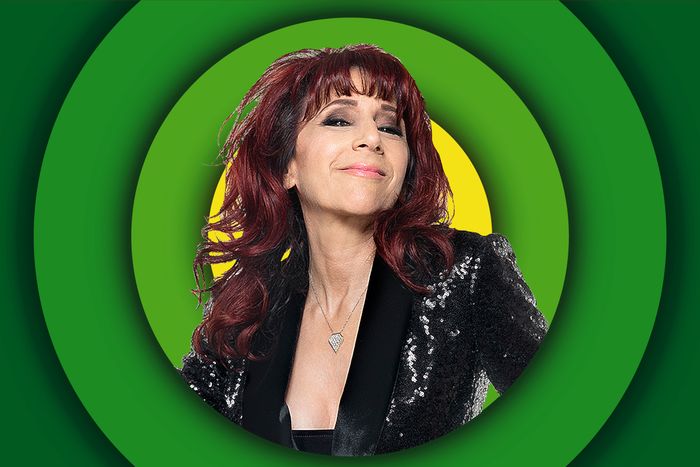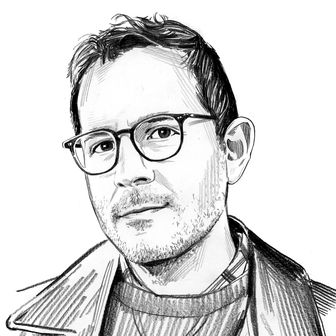
The history of comedy is a story of platforms, venues, and spaces. Malleable and cheap to produce, comedy fits itself into the shape of the place it’s in, from a vaudeville stage to a nightclub to a coffee shop to a comedy club to a bookstore, and the art form evolves in the process. (Comedy is a lot like the symbiote in that way. I think. Not sure if I actually followed Venom: Let There Be Carnage.) And UnCabaret is one of the great examples of this in stand-up’s history. Created in the early ’90s out of Beth Lapides’s frustration with comedy clubs, comedy-club comedians, and comedy-club audiences, it was a place for the coolest comedians in L.A. to showcase the material they actually wanted to do. Margaret Cho, Bob Odenkirk, Patton Oswalt, Kathy Griffin, and Michael Patrick King were among its regulars. Lapides demanded comedians do new material and would talk to them during their sets via a mic in the back, which resulted in a looser, more improvisational, and much more conversational style than had been happening in comedy for decades. It’s an influence you can still see in comedy today.
On Vulture’s Good One podcast, Lapides discusses the history and legacy of UnCabaret and her new audiobook So You Need to Decide. Below, you can read an excerpt from the transcript or listen to the full episode. Tune in to Good One every Thursday on Apple Podcasts, Spotify, Stitcher, Overcast, or wherever you get your podcasts.
On the UnCabaret Audience
I always thought of it as a psychographic more than a demographic, because I felt like it was a type of person … I would say “creatives.” There were definitely boldface names. There was definitely a Quentin Tarantino, and there was definitely a John C. Reilly. It was really happening. And when the L.A. Times put us front-page, above the fold, on a Friday calendar section, when that kind of thing was a big deal, it was like a “new breed of comedians” and “this is a new thing that’s happening.” So, people who are curious, people who are open, people who felt like they wanted to know what was going on, started coming. It was a smart audience. People definitely “got” stuff. You never had to worry, Is this too smart for them?
It was definitely connected. First of all, there was no backstage. There was a stair on the stairwell where the rest of the performers famously would sit, and people hung out. There was definitely a permeable wall. Some fans became friends. Some fans became annoying. Some fans were like the fan on Flight of the Conchords, since there was nowhere to go. We would always hang out and have dinner after the show, and so sometimes there was somebody, you know … But it was friendly; there wasn’t an adversarial relationship. I remember I got a review right before UnCab and it was like, “Sure, she’s funny, but the audience was on her side,” and I just was like, Why does it have to be a fight?
On the Sacrifices She Made to Foster a Scene Through UnCabaret
I was never the funniest, and it breaks my heart. At a certain point, I was going to write a book called How I Revolutionized Comedy Without Being Funny. I’m not saying I’m not funny, but I never got to really refine at the same level. I was kind of jealous of everyone in the show because they would do their UnCab thing, they’d get a thing, and then they’d go work on it. And then they’d come back and find a new thing and they’d go work on it. But I spent so much time doing UnCab that I didn’t have the ability to work on material much beyond it. It was not that I never worked on anything else — I did do a few one-person shows — but I didn’t get the mileage. Once UnCabaret started, I didn’t do what I had done, which we all do in the comedy clubs: the reworking.
I always felt I was the pace horse. Every show, I roughed it up and opened it up, and my job was gessoing the canvas. It was like, I need to be willing to be in the moment. And there were some nights — especially at Luna Park, but many nights throughout the various venues — where I would set something up and people would answer to it, and it would be a whole conversation. Sometimes people would come in with a set something they wanted to talk about and completely abandon it. Something else was happening in the room that reminded them of something, and then that’s their set. The night would hold together in such a beautiful, magical way. So I felt like it was my job to make that possible. I felt like it was my job to start being real and conversational and prepare the audience for this show. And that’s what I did.
On Her Advice to Young Comedians
Well, I mean, you know: “To thine own self be true.” But really, go where there’s passion for yourself and where you feel like there’s just no one else that can be you. That’s the only thing that you have that no one else has. I think of a rainbow and I think, Is yellow jealous of red?
I would say that, for the comedian: time onstage. Just time. Don’t hurry, love. You just can’t make it go faster than it goes. It’s so challenging now, but be willing to be out of the box if you’re out of the box. And, you know what? If you’re someone who’s in the box, be in the box. The feeling that you are doing your real work is something that I just don’t think there’s any substitute for. The things that I have failed at have been like, Well, I’ll try this. I think I can sell this. And then it doesn’t sell. Once somebody told me, “Never try to get something that if they say ‘no,’ you’re going to feel bad.” If you try something great and they say “no,” it’s like, Well, I tried this great thing.
This is so insane, but when I was just starting in comedy, I was at the Saturday Night Live after-party, and I was introduced to Dennis Miller as a young comedian. Dennis Miller said to me, “The secret of comedy is hair.” And if you look at my pictures throughout the years, I think I took that to heart.
More From This Series
- Nate Bargatze Fought Hard for the ‘Washington’s Dream’ Sketch
- Katt Williams Tells the Stories Behind Three of His Best Jokes
- Ego Nwodim Is in Her Silly Season


